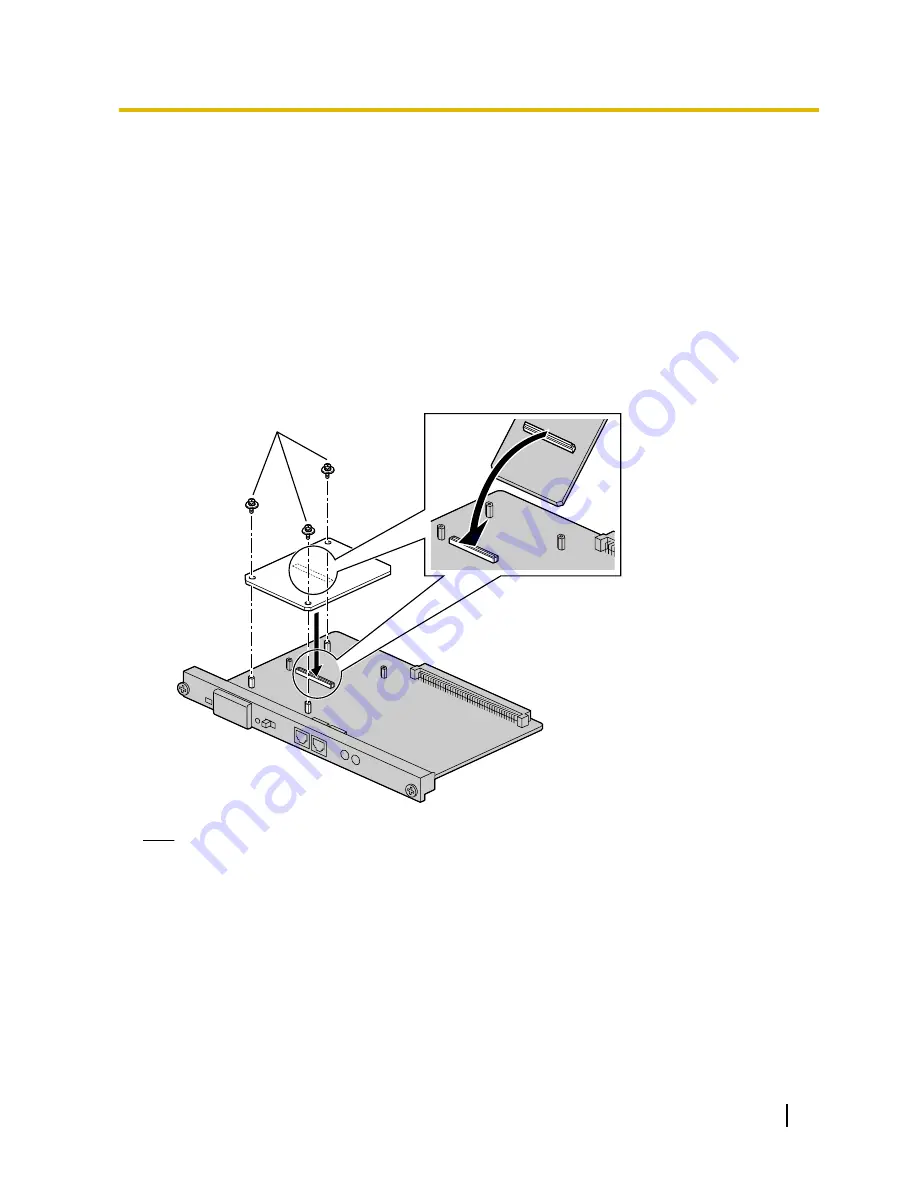
Installing the DSP Card
Depending on the number and the type of IP trunks and IP telephones you wish to use, required activation
keys are determined, and one of the DSP4, DSP16, or DSP64 card is selected to be installed.
DSP4:
4-channel DSP (Digital Signal Processor) card with a 4-Channel IP Trunk activation key and an
8-Channel IP Proprietary Telephone activation key preinstalled. Compliant with ITU-T G.729A
and G.711 codec methods. To be mounted on the IPCMPR card.
DSP16:
16-channel DSP (Digital Signal Processor) card with a 4-Channel IP Trunk activation key and an
8-Channel IP Proprietary Telephone activation key preinstalled. Compliant with ITU-T G.729A
and G.711 codec methods. To be mounted on the IPCMPR card.
DSP64:
64-channel DSP (Digital Signal Processor) card with four 4-Channel IP Trunk activation keys and
four 8-Channel IP Proprietary Telephone activation keys preinstalled. Compliant with ITU-T G.
729A and G.711 codec methods. To be mounted on the IPCMPR card.
DSP4 Card/
DSP16 Card/
DSP64 Card
Screws
inside
Note
If the preinstalled activation keys on the DSP card are not enough for the desired configuration, refer
to "4.1.3 Installing Additional Activation Keys".
Getting Started
7
2.1 Installing the DSP Card
Summary of Contents for KX-NCP500
Page 3: ...Section 1 Before Installation Getting Started 3...
Page 5: ...Section 2 Installation Getting Started 5...
Page 14: ...14 Getting Started 2 4 2 Connecting the IP Telephones to the LAN...
Page 15: ...Section 3 Before Programming Getting Started 15...
Page 21: ...Section 4 Programming Getting Started 21...
Page 59: ...Section 5 Confirming the Connection Getting Started 59...


























